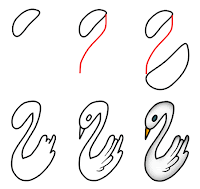As a parent this is our duty to teach them or show them the life skills by being a model yourself or simply teach them about money, budget and savings. From the very early age they should know what is budget and saving, because these lessons would work for them in a long run. An important step towards training of money saving is to teach them "not to be impressed by advertised products". Here are some tips which can be helpful in this connection:
HOW TO GET YOUR CHILDREN "BRAND FREE"Those of you that have children know what an excursion to the local mall or supermarket can be like. If you're not careful, this simple trip can easily become a wallet draining experience.
How often have you heard:
"I want Luchables because EVERYONE eats them at lunch!"
"Come on mom, these cool pants only cost $80."
"Dad, everyone has a Playstation II, I need one too!"
"I need 2 sodas and 2 bags of chips everyday!"
Certainly, we as parents want to make our children happy and not deprive them of a delightful childhood, but who's to say that you must give in to every one of your child's requests.
Why must you work twenty overtime hours just so your son can have a new video gaming system? Why must your grocery bill be over $200 just so your children can have the latest cereal, ice-cream, snacks, candies, and sodas available?
Truth About "Brand Names"
~~~~~~~~~~~~~~~~~~~~
Brand names cost money. Quite a bit of money. Especially when you add them up over time. The reasons these brands must charge more money is to cover their enormous advertising and marketing costs.
Since children are constantly bombarded with advertisements on the television and amongst their peers at school, they are most likely going to ask you for these same products.
No one really enjoys telling their children they can't have something they want, however looking at the bigger picture, what lesson are we teaching our kids if we simply give in to their every request?
For one, they are not learning the value of money and the role it plays in our lives. Secondly, they are not learning about the importance of conservation and how to properly budget their money.
Learning to budget and save money at an early age will really come in handy especially as they grow older, start driving, and get offered tempting pre-approved credit cards through the mail.
If they are not careful and able to budget their money effectively, this new found freedom may drain all the money from their pockets.
Teaching The Importance of Conservation
~~~~~~~~~~~~~~~~~~~~~~~~~~~~~~
Not only is this the perfect opportunity to get your children "Brand Free" and away from the expensive, trendy stuff, but it's also the perfect opportunity to teach them the value of money.
Here's one way you can approach this.
Explain to your children that the money you spend on clothes, food, toys, etc, depletes the amount you are able to save for future needs.
Explain that starting today, only the NECESSITIES will be purchased. No more ice cream, chips, soda, candy, lunchables, except maybe on special occasions. Toys and games will need to be earned and will no longer be given away for free. Etc...
For example, you could state that you will only be purchasing Cheerios (or another low priced cereal). If your children want to have Captain Crunch or Cookie Crisp, they will have to buy them using their own money.
Same principal for their lunches. Peanut butter and jelly sandwiches, tuna fish, apples, oranges, carrots, and raisons. If they want Lunchables or some other type of non-nutritious fast food, they will have to buy it with their own money.
Soon, you will have your child(ren) deciding "Is a Quarter Pounder Meal worth $4.50 out of my savings?" or "Do I really need that new video game that cost $50?".
This "brand free" approach can be applied to all other shopping areas aside from the supermarket example.
When you are shopping for clothes, ONLY buy the necessities. Ignore the most expensive and most popular items. Only buy what you, or the children, absolutely need, ignore all the rest.
Regarding toys and games, you can make it so that your children ONLY get "free" toys on Christmas and their birthdays. If they want something additional, they must purchase the item with their own money.
Taking These Ideas One Step Further
~~~~~~~~~~~~~~~~~~~~~~~~~~~
Once you have inspired your children to participate in this money saving, "brand free" lifestyle, it's time to MOTIVATE them to help increase their success.
As with everything in life, having a goal to strive for greatly increases the probability of success.
Goals help us stay focused on the task at hand. Goals help the individual strive for something tangible that's meaningful or important to them.
A runner's goal may be to shave 10 seconds off their lap time. This runner will then practice, workout, and time themselves, striving to run a lap 10 seconds faster than before.
In our "brand free" exercise, you may want to come up with a goal that you and your children can strive towards. For example, you could establish a short term goal that states, if your children can eat healthy and not ask for any "brand name stuff" for two months, you will take them to any movie they want to see.
Here are some more ideas for the various goal ranges:
Short Term: 1-3 months
picnic, trip to beach, movie of their choice
Medium Range: 3-8 months
new game, doll house, Chuck-E-Cheese trip
Long Term: 8-12 months
Disneyland trip, Water Theme park, day at the carnival
Sticking To Your Plan
~~~~~~~~~~~~~~~~
Regardless what your decide to implement, remember that this is your plan. You are the parent, so you decide what's best for your children. Don't take any negative remarks or any bad mouthing from your kids in regards to this new lifestyle. Stick with it!
Just keep in mind that these exercises and lessons will benefit your children in the long run regardless of what they may think of it at the moment.
Source
link




